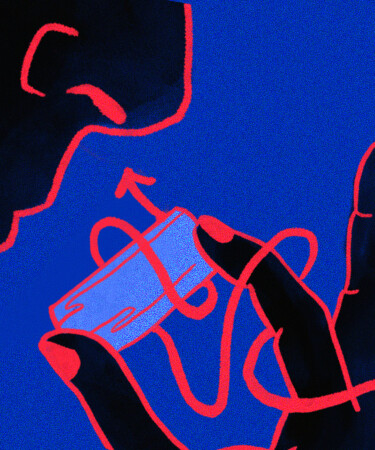For many wine enthusiasts, sniffing the cork after opening a bottle is a reflex, so when presented with a cork by a server or somm at a restaurant, it can feel instinctual to bring it straight to your nose. While it may seem sophisticated to give the cork a whiff or feel awkward to receive the cork and not do anything with it, this common restaurant ritual is often a futile act fueled by a series of misconceptions.
Sniffing a cork has historically been used as a method to detect if a wine is afflicted by the dreaded TCA (cork taint). An enzymatic reaction between compounds naturally found in cork can produce the chemical TCA, which renders wine undrinkable. Signs of a corked wine include a complete lack of the expected fruity aromas as well as an intense unpleasant smell that is often described as damp cardboard or wet dog. Perhaps this wine fault’s connection to cork is why drinkers feel a compulsion to check the closure for unwanted aromas as opposed to the wine itself.
Many drinkers pick up the cork-sniffing habit by mimicking sommeliers, wine educators, peers, or popular media programs that showcase the suspenseful moment where a wine lover elegantly passes the cork under their nose and triumphantly states whether or not the wine is corked. While many professionals do sniff the cork for this purpose, there is no scientific evidence proving that aromas from a cork can reliably indicate the presence of TCA in a bottle of wine, so many prefer to smell or taste the wine itself to make the final call.
Even if sniffing the cork were a failsafe way to determine if a wine is flawed, diners still aren’t necessarily responsible for testing the cork themselves. In a restaurant setting, sommeliers often examine the bottle prior to bringing it to the table. On top of that, servers typically pour the table a taste to double check that the wine is sound. Therefore, when the cork is presented to you with the bottle, the wine has already made it through several rounds of inspection.
So why does the server present the cork to you if it is not meant to be sniffed? Traditionally, this act was included in wine service as proof of a wine’s authenticity. Back in the day, fraud was so rampant in the wine industry that many systems had to be put in place to combat counterfeit bottles and ensure customers that the bottle they were presented with was in fact the one they ordered. Diners would compare the bottle’s label to the embossed logo on the cork to confirm that they were from the same producer, but now this relic of wine history’s past is just a fine-dining formality.
The next time you are presented with the cork at a restaurant, you can simply say thank you, place it on the table, and maybe even take it home as a memento.
